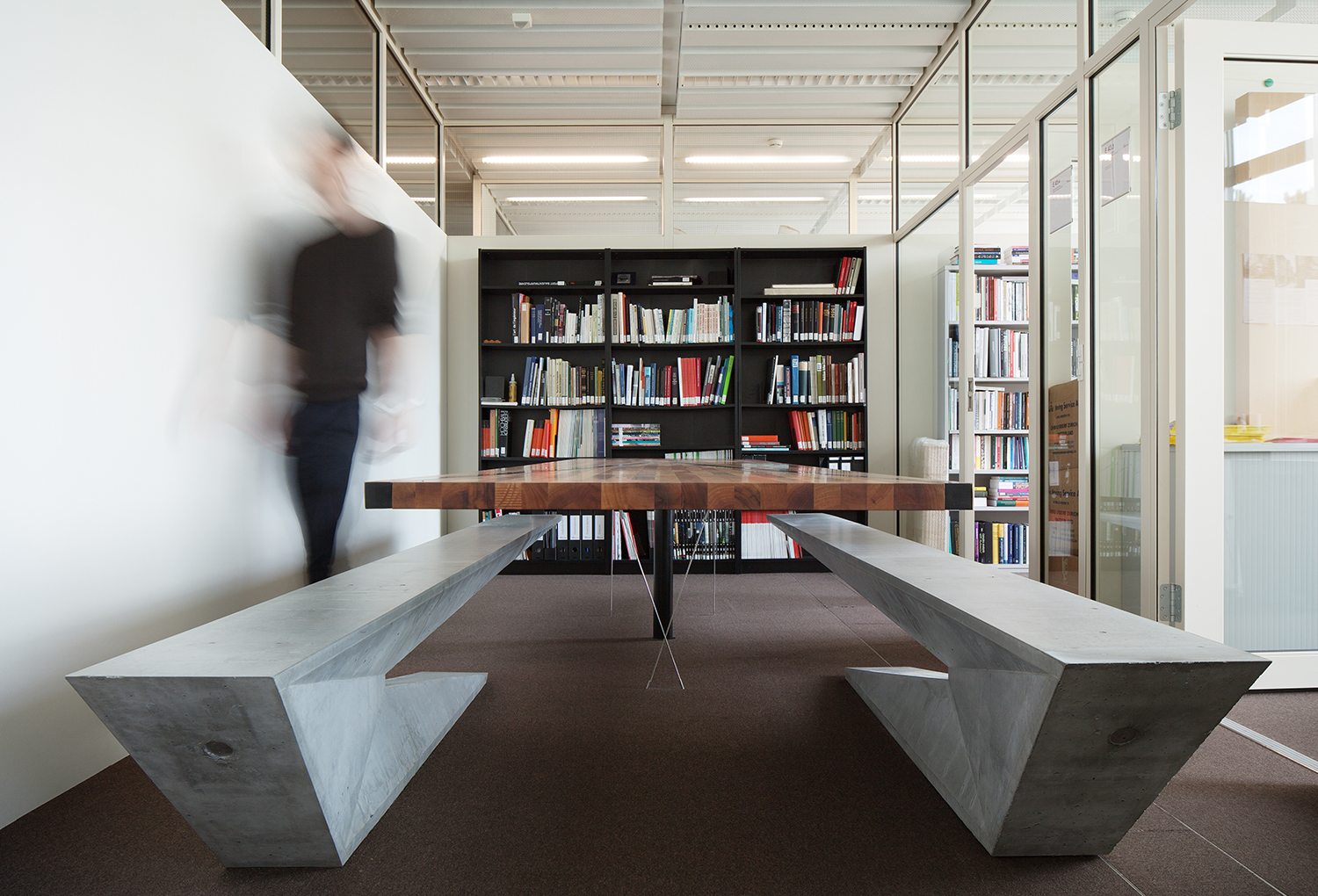
Noverturn
2014
Design: Ursula Jaray
Collaborators: Prof. Dr. Joseph Schwartz, Pierluigi D’Acunto, Ole Ohlbrock, Léa Boulic, Maximilian Schrems, Ursula Jaray, Lluis Enrique,
Ting Cao, Juanjo Castellon, Sema Alacam, Özgür Keles, Lukas Blank, Paul Frlicka, Paula Schilliger,
RapLab: Alessandro Tellini, Daniel Bachmann, Etienne Chevalley
Concrete laboratory: Dr. Heinz Richner
Dr. Schwartz Consulting: Julien Jufer
The aim of the "Noverturn" project is to research the interplay between design, structure and fabrication using concrete as an example. For
this purpose, the development of a bench as a sculptural reinforced concrete body with a cantilevered seating surface of more than 3m served
as a testing ground. To enable the extreme overhang, an adapted tensioning system was used. All necessary fabrication processes such as
formwork, reinforcement, concrete and prestressing work were carried out exclusively within ETH Zurich.
In intensive teamwork, the production process was managed by the chair′s assistants, supported by the expert guidance of the RapLab and
concrete laboratory. Numerous tests were carried out beforehand, such as pull-out tests with individual tensioning wires of the monostrands
and preliminary concreting tests on the body with reinforcement, to perfect the surface quality of the concrete, through to the development
of special reinforcement formwork spacers to ensure that the reinforcement was covered.
As with the "Counterpoise" research object, the predominant typology in bench design is that of an object that occupies the space as a
stable, self-contained element. Here, too, the objecthood is often reflected in the seclusion of a symmetrical disposition and the self-
referentiality of the formal language. The extravagance of the bench project consists in the inversion of this typology. The "Noverturn"
project oscillates between cantilever and support, as a seating element that simultaneously radiates into the surrounding space,
cantilevering from its secure base as an expression of strength and steadfastness, and embodies both heaviness and lightness through its
design. In contrast to the Counterpoise table, the support of the bench was positioned at its projecting end. In this way, it initially
turns its back to the entering observer and thus leaves the effect of floating to the tabletop for the time being. The position of the
benches in relation to the table top shows their supporting side as an optical resting place in contrast to the cantilevered side of the
table top. Only when viewed from the side does the balance of the reinforced concrete body with its large overhang become visible. A closer
look reveals the cantilevered gesture of the seating surface, which is in balance with the inclined bench foot leading to the floor. The
form becomes an expression of the inner flow of forces. Despite the cantilever of more than three metres, the bench rests on its own by
means of inserted conventional reinforcing steel and monostrand tensioning reinforcement without being anchored in the ground and can
therefore be moved freely.
last modified 4.2.2020

